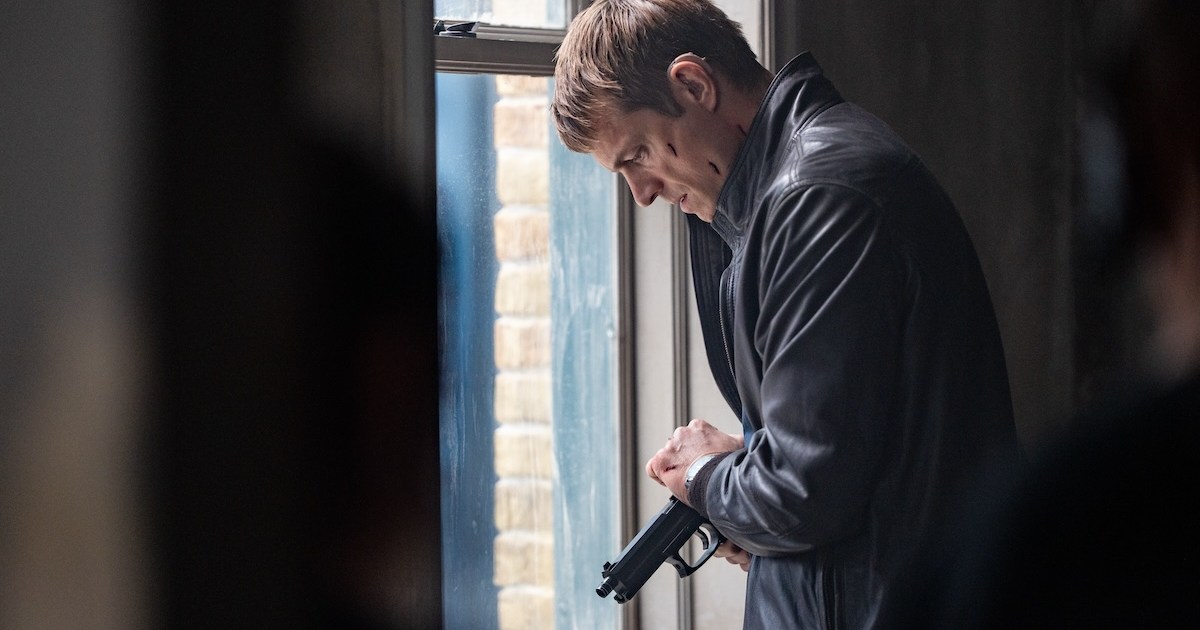ComingSoon Editor-in-Chief Tyler Treese spoke with The Silent Hour star Joel Kinnaman about his latest action movie. Anderson discussed working with co-star Sandra Mae Frank and director Brad Anderson, as well as learning American Sign Language for the role. It is out now in theaters and on digital.
“Boston Detective Frank Shaw (Joel Kinnaman) returns to duty after a career-altering injury leaves him with permanent hearing loss. Tasked with interpreting for Ava Fremont (Sandra Mae Frank), a deaf witness to a brutal gang murder, they find themselves cornered in a soon-to-be-condemned apartment building when the killers return to eliminate her. Cut off from the outside world, these two strangers must lean on each other to outsmart killers they can’t hear coming for their only hope of making it out alive,” says the synopsis.
Tyler Treese: I talked with Sandra, and she had a lot of praise for the work you put in before filming on learning American Sign Language. She spoke so passionately about practicing it with you during filming. How was it picking up that aspect of the film?
Joel Kinnaman: To me, that was the sort of the essence of the challenge going into this. I like to sort of be off-book. I know my lines before I start filming, and here I wanted to know my sign language lines too. But then I quickly realized that I really wanna try to go as deep as I can with this. It really is the way into that community and understanding the way that they communicate. Then I realized that the more that I picked up, the more of a shorthand me and Sandra had.
Of course, she had really good interpreters with her for most of the time. It’s very useful in having more in-depth, complicated conversations where you really get to know each other. But sometimes they weren’t around, especially when we were shooting, we’re at the top of a ladder or some elevator, and then it’s just me and her. Sometimes the crew and the camera’s far away, and they’re sort of yelling and, and then I was actually able to sort of communicate to her, “Oh, no. They’re, they’re changing it.”
It was exhilarating to take my first steps in there. Working with her changed my whole idea of what the most important aspect of acting is. So for the past 20 years of doing this, I’ve been convinced and sort of been preaching it to young actors that I talk to or whoever wants to listen to me preach, about the most important aspect of acting is listening. That’s the essence of presence and being present.
Then working with Sandra, and she is a world-class actor, just a stunning actor. She doesn’t hear, but she’s listening with her eyes. It really threw me for a loop. I’m like, wait, wait, wait, wait, what? How? I think that it’s so fascinating with the human experience and the human body when you remove an element, like a sense, how the human experience just finds another way. It really blew my mind and made me think a lot.
Since you did Silent Night and now The Silent Hour, which deal with different disabilities, what’s been most rewarding about really taking a look at these scenarios and these situations that you previously wouldn’t have really given much of a thought about?
I gotta find my blind one. I gotta complete my trilogy, the Three Monkeys. But it really is fascinating, and both Silent Night and Silent Hour really taught me things about my craft. It’s comedic that they just come right after the other. I was sure that Silent Hour was gonna change the title, but no. So here we go.
But, yeah, for me as an actor, they were two very different experiences, but they did have more in common than just the title. It’s that thing where when you remove one aspect, all the others become so much more important. Not having any lines in Silent Night just made me realize things about my craft and, similarly, made me realize things about life on Silent Hour.
You’ve worked with a lot of great directors, and I was curious about Brad Anderson‘s approach to action. There’s some really tense action sequence in this. What stood out about how he directed those scenes?
He is incredibly well-prepared, and he is a natural editor. He is one of those directors who really has the edit in his head already, so he knows exactly what he wants. Then if something doesn’t work, he can sort of re-edit it in his mind. Then he can add a shot that he knows where he is gonna put it in the edit. These sorts of action movies that are trying to have a bigger scale than what the budget allows are pretty fast-paced, so the only way to make a really strong film is to be extremely well-prepared. So, the more preparation you have, the more things off the cuff you’re able to do. His vision is really tight. He knows exactly what he wants and when you have that sort of assuredness from the leader, the director, then it’s very easy to fall in line and add your piece to that vision.

